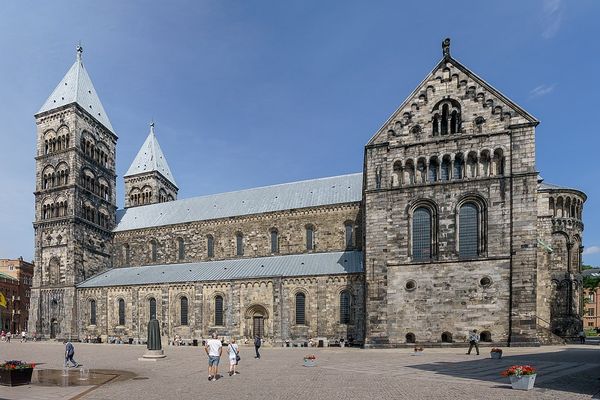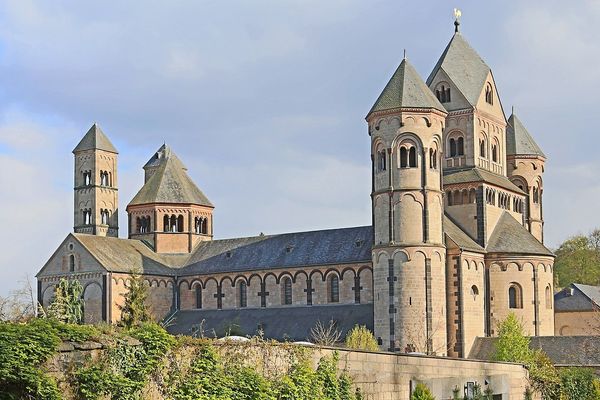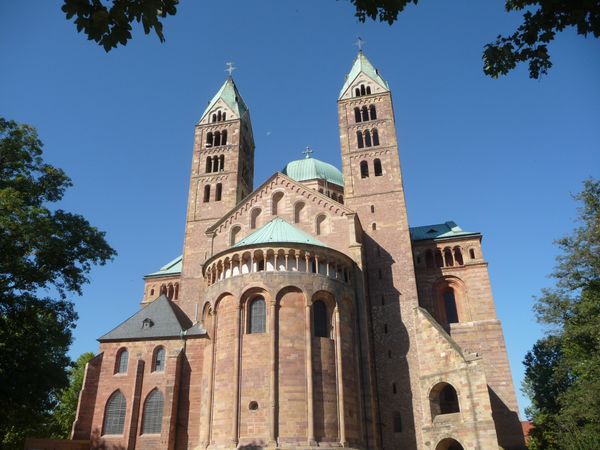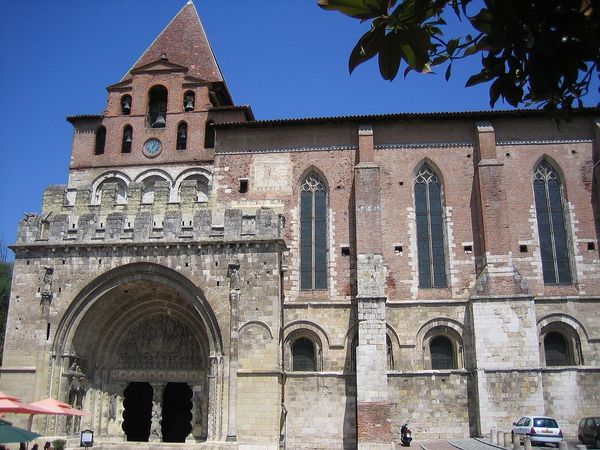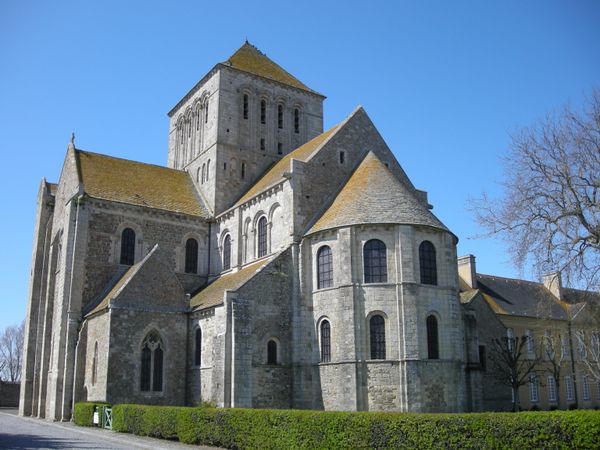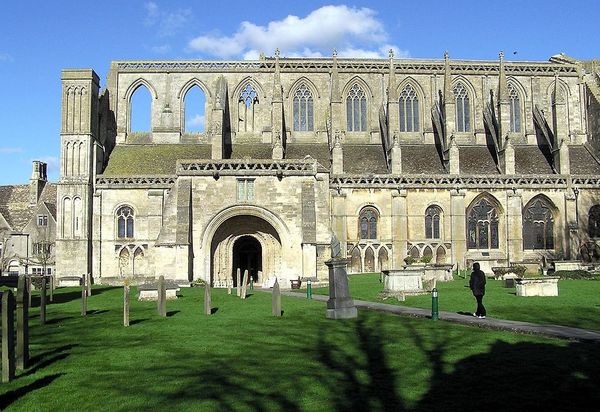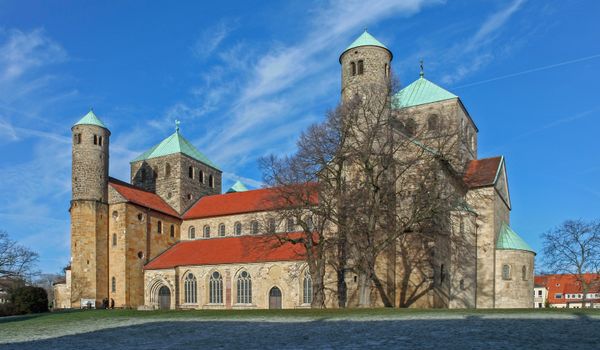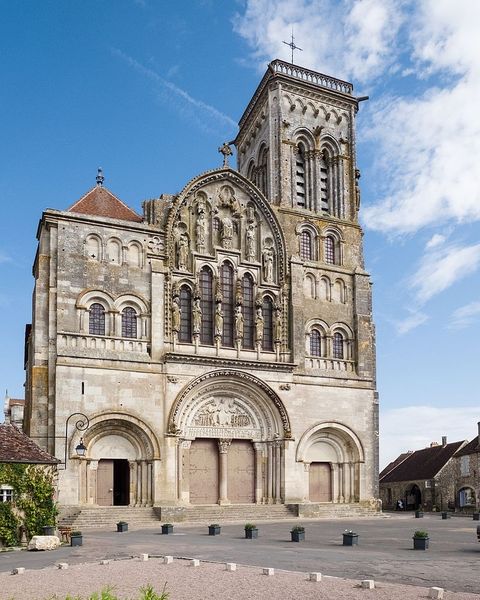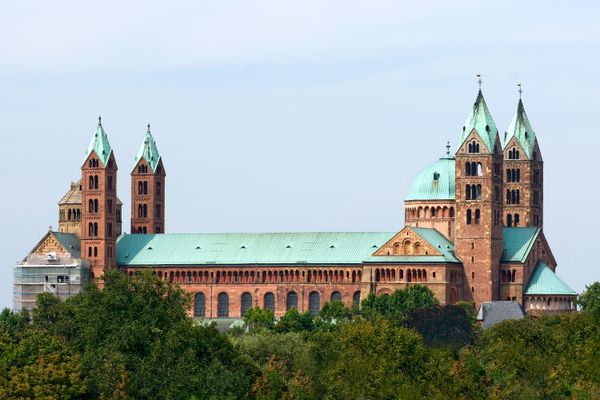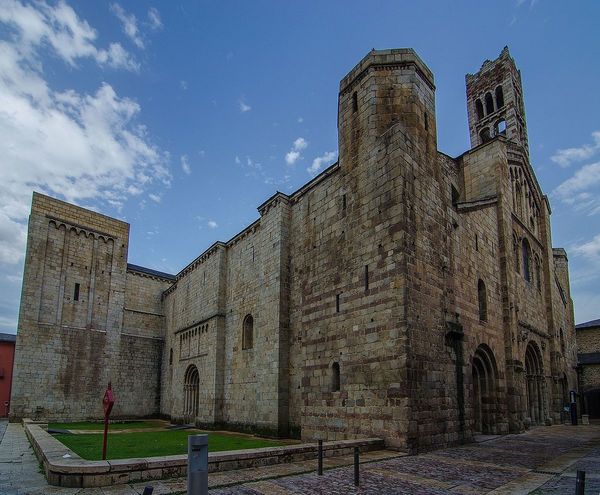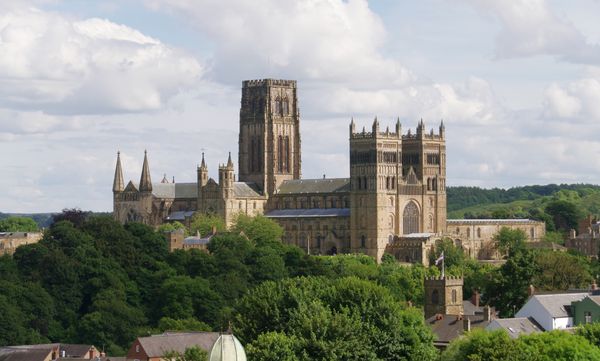
public-art, photography, architecture
#
public art
#
medieval
#
landscape
#
public-art
#
historic architecture
#
photography
#
romanesque
#
architecture
#
historical building
Copyright: Public domain
Editor: So, we're looking at a photograph of St. Albans Cathedral, taken of course, much later than its construction in 1077. It's quite imposing. It looms there in brick and stone. What’s particularly striking is its relationship to the green space in front; it almost seems integrated into daily life rather than isolated as a strictly religious monument. What catches your eye here? Curator: The photograph captures a compelling tension between labor and leisure, doesn’t it? This massive cathedral, built through immense, often forced labor with locally sourced materials, now overlooks a scene of utter repose. Note the specific way the stone is hewn, likely from nearby quarries; imagine the collective effort, the social structures that supported and indeed compelled its creation. How might we interpret this contrast? Editor: Well, perhaps it’s the evolving purpose of the structure. Built through labour, now it acts as a backdrop for leisure... A historical reminder. But I’m curious; does the materiality speak to a larger cultural narrative of the Romanesque period? Curator: Precisely! Think about the weight of the stone, the Romanesque style emphasizing mass and solidity, all constructed through innovative labor systems. It wasn't just about religious devotion, but also about displaying power, resource control and innovation through design. Notice how the aesthetic integrates into and almost obscures earlier construction methodologies... Are we looking at progress or obfuscation? Editor: I see what you mean. It is like the raw effort of its construction is somehow hidden behind a veneer. But how do we reconcile that history with its present role in the community, with families relaxing nearby? Curator: That’s precisely the point. By analyzing its material reality – the locally-sourced stone, the construction techniques, and even the accessibility afforded by that green space – we begin to understand how societal values have evolved, and what we value today. Editor: That makes me look at the photograph completely differently. It’s not just a picture of a beautiful building, but an artifact of changing labor practices and societal values over time! Curator: Absolutely, seeing it this way is, well...constructive.
Comments
No comments
Be the first to comment and join the conversation on the ultimate creative platform.

